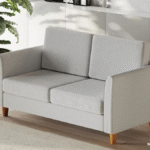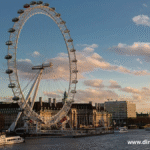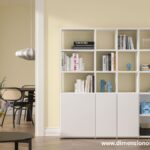Have you ever wondered just how tall a standard Pringles can Dimensions really is or why it comes in that specific size? In this article, we’ll dive deep into the Pringles can dimensions, exploring the standard height, diameter, capacity and the engineering, design, global variations and sustainability behind the packaging.
Exact Dimensions of a Standard Pringles Can
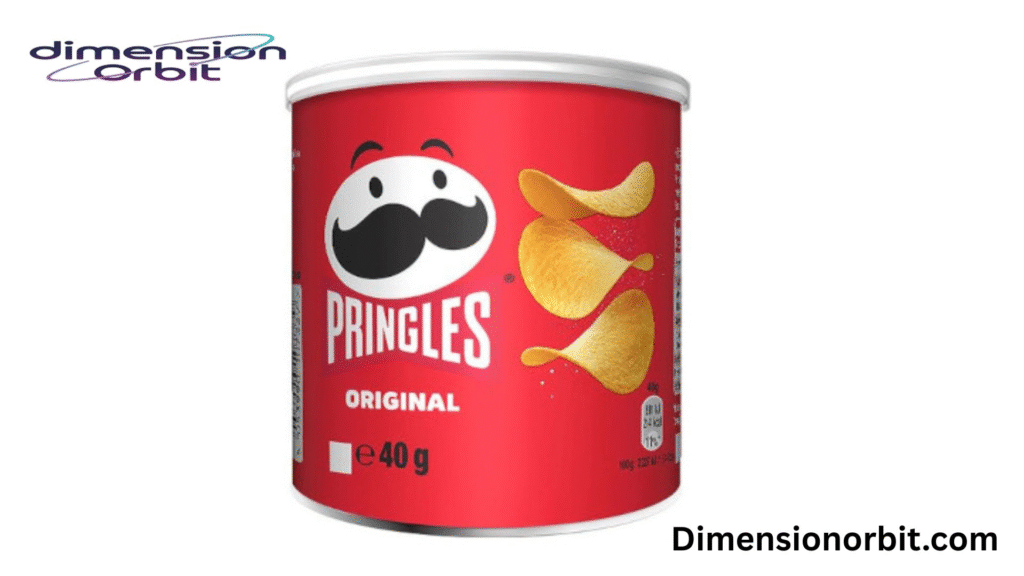
Height, Diameter, Volume & Capacity
Let’s dig into the real numbers the ones you can measure at home or check on the shelf.
| Measurement | Typical Value | Notes |
|---|---|---|
| Height | 10 inches ( 25.4 cm) | This is the common size sold in many markets. |
| Diameter | 3.0 inches ( 7.6 cm) | The width of the top circular opening. |
| Net Chip Weight | 5.2–5.5 oz ( 147–156 g) | Standard content inside the “full size” can. |
| Internal Volume Use | Approx. 90% | The tube efficiently uses its space. |
When you ask, “What’s the height of a standard Pringles can?” you can respond: about ten inches tall and roughly three inches across designed to hold around 150 grams of crisps in that familiar cylinder.
Why choose these dimensions?
- The 10 inch height allows for a neat stack of saddle shaped chips without leaving too much empty space (which can lead to breakage).
- A 3 inch diameter ensures the chips fit snugly and the packaging remains easy to hold.
- Efficient internal volume means less wasted space, better transport, and less risk of crushed chips.
- How Big Is 2 Inches? 12 Everyday Items.
How Big Is 2 Inches? 12 Everyday Items
Evolution of the Pringles Can Design
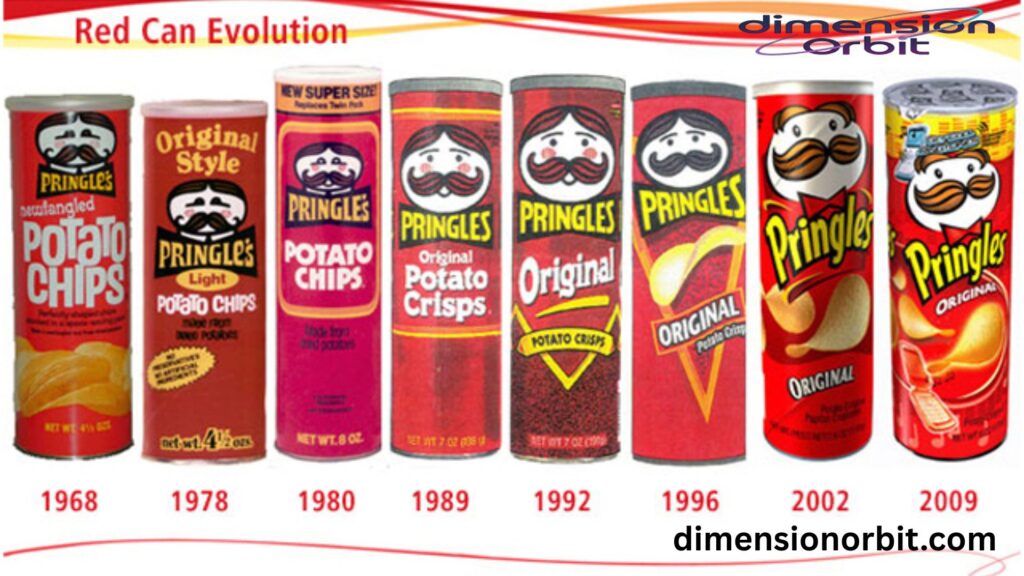
From the Original Concept to Today’s Tube
There’s more to this tube than meets the eye. The design evolved over decades but its core cleverness remains.
- The packaging concept stemmed from engineer Fredric J. Baur and his patent for a resealable, stackable chip container.
- Early versions used heavier and more complex materials metal bottoms, foil liners, heavy lids reflecting older manufacturing techniques.
- Over time, the brand shifted to lighter, cost effective materials while preserving chip protection and shape.
- Marketing played its part: the tall cylinder, bold graphics, bright colour schemes and plastic lid made the tube instantly recognizable.
- Behind the scenes, adjustments in size, material and design centred on logistics: shipping efficiency, shelf display, and manufacturing cost.
Material & format changes included:
- A multi layer shell: typically cardboard paperboard for the tube, a thin metal base for rigidity, and a plastic lid for resealability.
- Advances toward lighter and more eco friendly liners and packaging materials though trade offs remain.
- Variant sizes: mini cans, travel size, party size all scaling the core “standard” cylinder while keeping the same visual identity.
How Long Is 20 Inch? 12 Common Things
Why the Pringles Can Dimensions Matter

It’s Not Just Size: It’s Purpose
Those numbers (height, diameter, etc.) aren’t arbitrary they matter. A lot.
Protecting the Chips & Extending Shelf Life
- The rigid tube prevents chips from getting crushed like those in flexible bags.
- Because the chips are stacked and supported by the cylinder wall, breakage is minimised.
- The resealable lid and internal barrier liner help maintain freshness, keeping chips crisp longer.
Storage, Portability & Retail Efficiency
- A 10 inch tall, 3 inch wide container fits easily in kitchen cupboards, snack drawers, backpacks or even car cup holders.
- Retailers love it: predictable dimensions make shelf planning and pallet loading easier.
- For the consumer: you know what you’re getting; the shape and size are consistent.
Branding & Unique Packaging Appeal
- That tall red (or flavour colour) tube stands out among standard flat bags.
- The shape becomes part of the brand identity recognisable even without reading the label.
- Because the packaging is consistent across flavours and regions, it strengthens the brand experience globally.
The Science Behind the Pringles Can Shape
Geometry, Engineering & Intent
The tube isn’t simply “a cylinder” it’s the result of purposeful design interacting with the chip shape.
- The chips are shaped as a hyperbolic paraboloid (or “saddle shape”) which allows them to stack efficiently, stay intact and use space well.
- A cylindrical container with consistent dimensions gives uniform support around those curved chips.
- Compared with flexible chip bags, the cylinder offers better stacking, less wasted volume and stronger protection some estimates suggest 90% internal volume usage.
Cylindrical Packaging vs Traditional Chip Bags
Here’s a side by side look:
| Feature | Pringles Tube (Cylindrical) | Traditional Chip Bag |
|---|---|---|
| Chip Protection | High rigid walls minimise damage | Lower movement and flex increase breakage |
| Storage & Stacking | Predictable size, neat stacking | Irregular shape, inefficient stacking |
| Internal Volume Usage | 90% efficient | Often large air pockets and waste |
| Material Complexity | Mixed materials (tube + lid) | Mostly plastic/foil laminate |
| Branding Impact | Distinctive shape aids recognition | Less distinctive among many bags |
How Tall Is 66 Inches? 10 Common Things
The Tube’s Second Life: Education, Storage & Creativity
When the chips are gone, the can lives on and people find all kinds of clever uses for it.
STEM & Engineering Education
- Educators use empty tubes to teach geometry (calculating cylinder volume, diameter, height).
- Students build simple speaker horns or sound amplifiers using the tube.
- Some DIY projects use stacked tubes to demonstrate load bearing structures or model towers.
Household Storage & DIY Upcycling
- Cleaned tubes make excellent pencil holders, yarn spinners, craft supply organisers or cookie containers.
- One idea: mount a tube horizontally, use it as a cable organiser under a desk.
- Because the size is consistent (10 inches tall, 3 inches diameter), project planning becomes easier.
Environmental Innovation & Recycling challenges
- The sturdy tube design makes reuse appealing. But the multi material construction complicates recycling.
- Designers hoping to reuse or up cycle the tube need to account for the fixed dimensions when creating new products or models.
Global Market Variations in Pringles Can Dimensions
How Size and Format Shift by Region & Use Case
Though we’ve been talking about the “standard” size ( 10 inches tall, 3 inches diameter), the real world adds variation depending on market and product size.
Regional & Variant Size Differences
- In some Asian markets, the can may be closer to 8.5 inches tall (21.6 cm) while the diameter increases to 4.0 inches (10 cm).
- Travel or “mini” versions might measure 4–5 inches (10–12 cm) in height, while keeping the same diameter around 3 inches.
- “Party size” cans in certain markets trend toward 12 inches tall (30 cm) and hold larger chip counts (200 g+).
Cultural & Portion Sizing Influences
- Where snack-sharing culture is dominant, larger formats become common (taller tubes).
- In markets with individual serve habits, smaller tubes dominate.
- Retail shelving standards, shipping logistics and local manufacturing constraints also shape these dimensional decisions.
Industrial & Engineering Insights: How a Pringles Can Is Made
From Materials to Manufacturing
It’s one thing to measure the height and diameter but how do you turn raw materials into that recognisable tube?
Material Science & Structural Design
- Outer shell: paperboard or cardboard tube provides rigidity and surface for branding.
- Bottom: a thin metal disc adds strength and sealing.
- Lid: a snap-on plastic top allows resealing and maintains freshness.
- Liner: inside may include foil/metallised film to block oxygen and moisture.
Production Process at a Glance
- Tube formation: Paperboard wound into a precise cylinder (height 10 inches, diameter 3 inches).
- Base insertion: Metal base secured and sealed.
- Labeling: Graphic wrap printed and applied to the exterior.
- Filling: Chips stacked inside the tube in a consistent orientation.
- Sealing: Foil or barrier layer placed; plastic lid locked in.
- Quality control: Drop tests, crush/stack tests, seal integrity tests ensure consistency.
Precision Engineering & Logistics
- Maintaining uniform dimensions allows manufacturers and retailers to optimise equipment, packaging lines and shelf space.
- From pallet stacking to shelf planograms, knowing each can is 10 inches tall and 3 inches across simplifies logistics.
- Minor deviations matter if one variant is significantly taller or wider it disrupts stacking, shipping, shelving.
Environmental Impact & the Future of Pringles Packaging
Sustainability, Innovation & What’s Next
The tube’s iconic shape is set but packaging expectations are changing. More than ever, size, materials and circular economy thinking matter.
Recycling Challenges of Composite Packaging
- The multi material structure (paperboard, metal base, plastic lid, foil liner) makes recycling complex components ideally separated for proper processing.
- While the tube’s efficient internal volume (90%) is strong from a logistics view, it doesn’t solve material reuse or end of life issues.
Packaging Innovation & Sustainability Goals
- Packaging roadmaps indicate moves toward single material tubes, reduced weight, and improved recyclability or compostability.
- We may see designs that maintain the 10 inch height 3 inch diameter footprint (to preserve brand identity) but switch materials for example:
- Fully paper-based tubes with liner technology
- Reusable/refillable systems
- Biodegradable or easily separable lids and bases
Role of the Consumer & Outlook
- As a snack buyer, you can reuse the tube for storage or up cycling rather than throwing it away.
- Knowing the dimensions helps you estimate shipping footprint, storage needs, and reuse potential.
- The future of snack packaging will likely keep the iconic cylindrical form and similar dimensions but shift toward lighter, more eco friendly materials.
How Pringles Reinvented Snack Packaging
From Problem to Innovative Solution
Problem: Traditional potato chip bags often leave many broken chips, lots of wasted air space, and inconsistent portions.
Innovation: The cylindrical tube stackable, resealable and engineered to keep the chips intact.
Implementation:
- Engineers developed the can with a 10 inch height, 3 inch diameter to hold the saddle shaped chips efficiently.
- Over time, material changes, size variants and global rollouts refined the concept.
Impact: - The tube became a symbol of the brand, strongly associated with the snack itself.
- It influenced packaging design across the snack industry other brands began exploring rigid containers, stackable formats and resealable lids.
- Consumers came to expect the bright cylinder on shelves; the packaging itself became part of the experience.
Digital tool
Digital tools like Feet and Inches Calculator can convert inches to centimeters or feet instantly. Many smartphone apps now offer augmented reality measuring features, allowing you to gauge objects virtually and compare them to known lengths.
FAQs
What are the exact dimensions of a standard Pringles can?
A standard Pringles can is about 10 inches tall and 3 inches in diameter, holding roughly 150 grams (5.2–5.5 oz) of chips.
Why did Pringles choose these specific dimensions?
The size perfectly fits the stacked saddle shaped chips, prevents breakage, and makes the can easy to store, ship, and hold.
Who invented the Pringles can design?
Fredric J. Baur, an engineer and chemist, created the iconic stackable chip container and even requested to be buried in one!
Are Pringles cans recyclable?
Not easily the multi layer construction (paper, foil, metal, and plastic) complicates recycling. However, reuse and upcycling are encouraged.
Do Pringles can sizes vary by country?
Yes! Some regions sell shorter or wider cans like 8.5 inch tubes in Asia or 12 inch party cans in the U.S.
What makes the Pringles can shape so effective?
Its cylindrical design protects chips, uses space efficiently (about 90% internal use), and keeps snacks crisp and fresh.
Can you reuse an empty Pringles can?
Absolutely! Turn it into a pencil holder, speaker tube, cable organizer, or craft container endless creative options.
Why are Pringles chips shaped like saddles?
They’re hyperbolic paraboloids, designed to stack perfectly and resist breakage while giving that signature crunch.
Are there different Pringles can sizes available?
Yes from mini travel cans to party size tubes, all keep the same iconic look and proportions.
What’s next for Pringles packaging?
Expect eco friendly innovations, like paper based or recyclable tubes, while keeping that classic 10 inch silhouette.
Conclusion
The dimensions of a Pringles can aren’t just arbitrary numbers they’re a clever fusion of engineering, branding and logistics. From the roughly 10 inch height, 3 inch diameter standard tube to regional size tweaks and sustainability shifts, every measurement carries purpose. Next time you pick up that tall red cylinder, you’ll know it’s not just packaging it’s a design built for performance, freshness, global distribution and recognition.

Jhon AJS, the author of Dimension Orbit, is an experienced blogger fascinated by the mysteries of existence. He explores every type of dimension from scientific to spiritual with clarity and creativity. Jhon’s engaging writing style invites readers to think deeper, question reality, and discover new perspectives on the universe.



